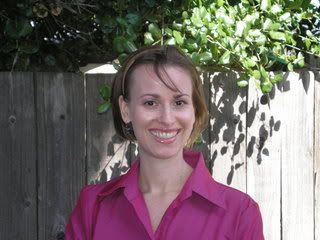 Welcome to your Wednesday morning essay from a fantastic writer, Maryanne Stahl.
Welcome to your Wednesday morning essay from a fantastic writer, Maryanne Stahl.THE CREATIVE IMPULSE
This essay was originally published in Critique Magazine
"Live all you can; it’s a mistake not to."
—Henry James, The Ambassadors
One summer, I tripped and fell in the yard, and my cry summoned my then husband from our house. I lay flat on my back, looking up at him and the sky, simultaneously laughing and crying. "I just thought of the first line for my next chapter," I told him. "Anna was accident prone."
He helped me up. Then he smiled and said, "I pity you poor writers. What you go through for one good sentence."
This was a joke between us.
"You have to be crazy to do it," he added.
He knew I wouldn’t argue. There is no good reason to be a writer—or an artist of any kind—unless one is compelled to be. But neither is there a much more rewarding enterprise. Furthermore, though all the divine inspiration in the world won’t forestall the inevitable sweat labor of the work of making art, artistic opportunity often knocks into one while one is crossing the yard.
What is the nature of the creative impulse? Is it bio-chemical? A kind of neurosis? Can it be learned? Can it be crushed?
The artist perceives—and at some future point transcribes her perception—in a particular and individual way, a way that resonates beyond the personal experience to illuminate a human truth. Is the creative impulse born of a way of seeing the world, a heightened awareness? Joan Didion wrote that the writer is afflicted presumably since birth with "a presentiment of loss", engendering the need to capture what is transient. Does the writer hold a mirror to her awareness of being in order to prove she exists? Or is the writer’s desire to play God, to observe with an eye toward bestowing order—pattern and form—upon chaos?
What inspires, anyway? One might say everything, but that is as good as saying nothing. And indeed, we are none of us continuously inspired. So how is inspiration, that headiest of states, achieved? Must we wait for the muse to strike or can we go in search of her?
Clearly, sometimes, she strikes unbidden. I am not a strict enough Freudian to suppose I deliberately tripped myself in order to come up with an opening line to my chapter. However, I was quick to seize the experience, to "use" it, as writers say. And that I think is what mostly happens. Something trips us up, literally or otherwise, and an electrical, Frankenstein-connection in the mind is made. The light bulb goes off. We say yes, I see, this reveals something.
Can we go in search of the muse? Not really, though we try. Michael Chabon says writers will entangle themselves into dramatic situations in order to write about them. And we are well versed in the traditions of muse-searching by way of the bottle or the opium pipe or the passionate embrace. It’s certain, as well, that as long as the sun blazes and the ocean roars and the moon rises in the sky, writers will be moved to write of them. And still, when it happens, when we see the newly-imaginable take shape before our mind’s eye, we are filled with excitement and gratitude, as for a gift—or a miracle.
Now I am stopped at a light on the way to fetch my son from school. In the left lane in front of me, a woman driving a white Jeep flips her hair with her hand. That gesture, the easy grace of it, the sleek fall hair against cheek, reminds me of a friend from thirty years ago. That gesture releases a flood in me. I know if I were to meet that woman in the white Jeep I would react to her largely out of my associations with J__. I am back in the communal house we shared with a half dozen others. I’m in her room, we’re smoking cigarettes, she’s telling me about using a speculum to view her cervix.
I take notes, scribbling as the light changes. Will these words become part of a story, a poem, a character in a novel? I don’t know. Will I forget I wrote this and come across it some months, perhaps years in the future? Very possibly. Or I might continue to play with the image and the memory, their dynamics perhaps informing a dream. If I write tomorrow morning, I may envision a scene in which two good friends who are in competition reveal their boundaries and the covert rules of their engagement.
That’s how it works for me. In painting and photography as well. I tend to go back and forth from verbal to non-verbal modes of expressing, that is to say, from writing phases to painting/photography phases. I used to worry when immersed in one modality that I had lost the ability to perform the other. But I’ve learned my own cycles. I approach them openly now, curious what will come, secure that it too shall pass.
In fact, that’s my basic approach to life, especially in these times. There’s only one way to nourish the creative impulse, wherever it derives: Live all you can!
MARYANNE STAHL has published two novels, Forgive the Moon and The Opposite Shore. She is currently at work on her third novel set in Thunderbolt, Georgia, where she lives. Visit her website
Read This Poem of Hers
P.S. I'm not the "J" she refers to.





4 Comments:
Great essay. I'm sorry I missed this the first time around, but thank you for posting it!
Enjoyed this essay, thanks.
This is wonderful. I especially liked the part about tripping in the yard and finding the first line of the next chapter.
The muse must be seduced.
Post a Comment
<< Home